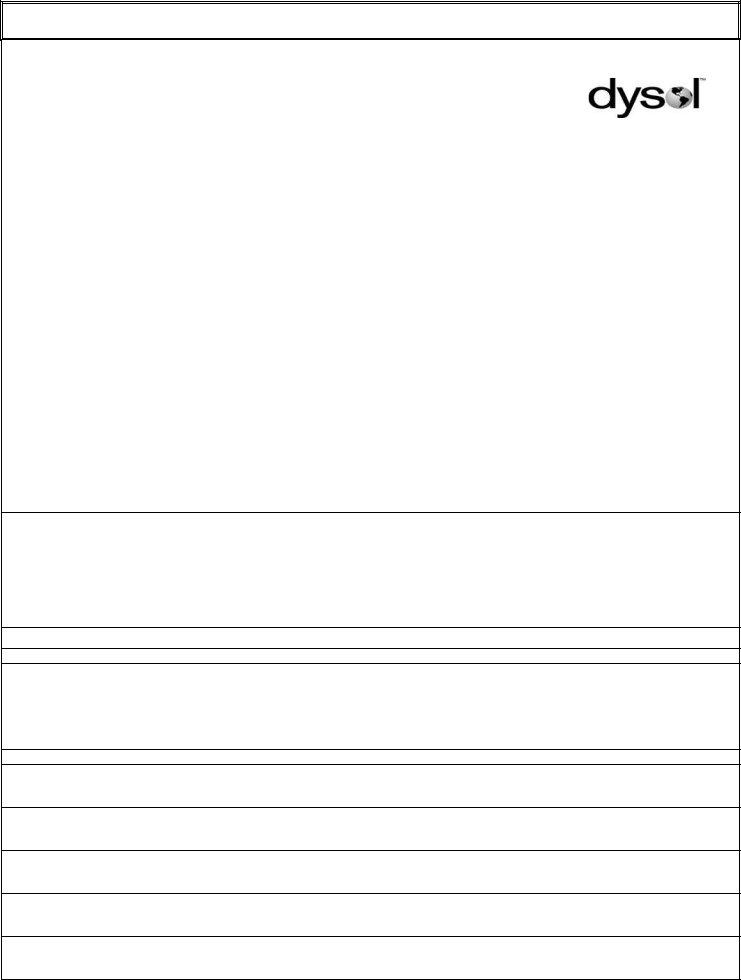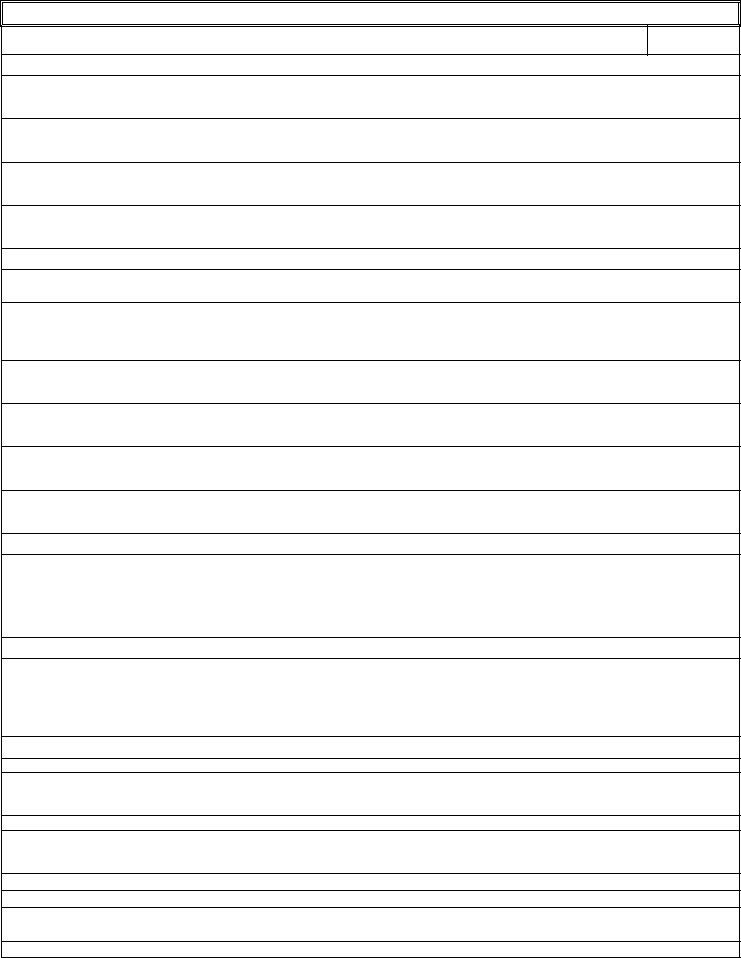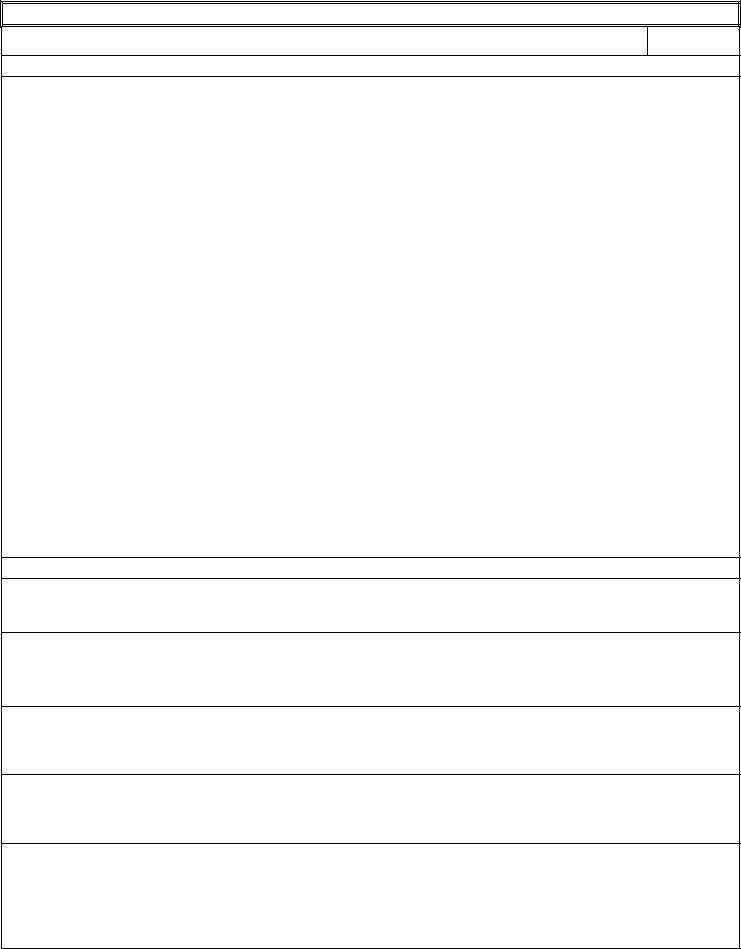The DS-108 Wipe Solvent, encapsulated in its Material Safety Data Sheet (MSDS), is a colorless combustible liquid primarily used as a cleaning solvent. Developed and patented in the United States, this product carries a Patent No. 5,437,808 and has been manufactured by Dysol Inc., since October 6, 2006. This MSDS thoroughly outlines the solvent's composition, including hazardous ingredients like ethyl lactate and petroleum distillate, alongside its potential health effects ranging from eye and skin irritation to more severe respiratory complications. Vital first aid measures, fire-fighting procedures, and precautions for handling and storage are meticulously detailed to ensure safety and compliance. Additionally, the document delves into the chemical's physical and chemical properties, stability, reactivity, and toxicological information, providing a comprehensive insight into its safe usage and environmental impact. Regulatory information, encompassing compliance with laws such as the Toxic Substance Control Act (TSCA), Superfund Amendments and Reauthorization Act (SARA TITLE III), and others, assures users of its adherence to stringent safety standards. This MSDS revision, prepared by Comprehensive Data Base, Inc., not only serves to inform about the DS-108 Wipe Solvent's safe application but also emphasizes the importance of following protocol to mitigate any potential hazards linked to its use.
| Question | Answer |
|---|---|
| Form Name | Ds 108 Form |
| Form Length | 4 pages |
| Fillable? | No |
| Fillable fields | 0 |
| Avg. time to fill out | 1 min |
| Other names | n-propyl, ds 108 solvent, MSDS, 2006 |

MATERIAL SAFETY DATA SHEET
SECTION 1 - PRODUCT AND COMPANY IDENTIFICATION
PRODUCT NAME: DS - 108 WIPE SOLVENT |
|
|
|
|
|
|
|
|
|
|
|
|
GENERAL USE: Cleaning solvent |
|
|
|
|
|
|
|
|
|
|
|
|
PRODUCT DESCRIPTION: Colorless combustible liquid |
U.S.A. Patent No. 5,437,808 |
|
|
|
|
|
|
|||||
|
|
|
|
|
|
|
|
|
|
|
||
|
|
|
|
|
|
|
|
|
|
|
|
|
MANUFACTURER'S NAME |
|
|
DATE PREPARED: |
October 6, 2006 |
|
Page 1 of 4 |
||||||
Dysol Inc. (formerly Dynamold Solvents, Inc.) |
|
|
SUPERSEDES: |
September 1, 2006 |
|
|||||||
|
|
|
|
|
||||||||
ADDRESS (NUMBER, STREET, P.O. BOX) |
|
|
TELEPHONE NUMBER FOR INFORMATION |
|
|
|
||||||
2901 Shamrock Avenue |
|
|
(817) |
|
|
|
|
|
|
|
||
MATERIAL SAFETY DATA SHEET |
COUNTRY |
|
EMERGENCY TELEPHONE NUMBER |
|
|
|
||||||
Fort Worth, TX 76107 |
USA |
|
CHEM • TEL |
(800) |
Outside USA |
(813) |
||||||
|
|
|
|
|
|
|
|
|
|
|
|
|
DISTRIBUTOR'S NAME |
|
|
|
|
|
|
|
|
|
|
|
|
|
|
|
|
|
|
|
||||||
ADDRESS (NUMBER, STREET, P.O. BOX) |
|
|
TELEPHONE NUMBER FOR INFORMATION |
|
|
|
||||||
|
|
|
|
|
|
|
||||||
(CITY, STATE AND ZIP CODE) |
COUNTRY |
|
EMERGENCY TELEPHONE NUMBER |
|
|
|
||||||
|
|
|
|
|
|
|
|
|
|
|
||
SECTION 2 - HAZARDOUS INGREDIENTS |
|
|
|
|
|
|||||||
|
|
|
|
|
|
|
|
|
|
|
|
|
HAZARDOUS COMPONENTS |
CAS # |
|
% |
|
OSHA PEL |
|
ACGIH TWA |
|
SARA |
RQ |
||
|
(by weight) |
|
PPM |
MG/M3 |
|
PPM |
MG/M3 |
TITLE III |
LBS |
|||
|
|
|
|
|
||||||||
|
|
|
|
|
|
|
||||||
|
|
|
|
|
|
|
|
|||||
Ethyl lactate |
60 - 75 |
|
not established |
|
|
|
||||||
Petroleum distillate, aliphatic |
10 - 30 |
|
100 |
500 |
|
|
|
|
|
|
||
Propylene glycol |
10 - 20 |
|
not established |
|
|
|
||||||
SECTION 3 - HAZARDS IDENTIFICATION
EMERGENCY OVERVIEW
Colorless liquid, potentially hazardous vapors. Flammable as defined by DOT and TDG for Air / Ocean transport. Classified by DOT as Combustible for ground transport in containers less than 120 gallons. Classified as Combustible by OSHA. Can cause serious or fatal complications if swallowed. Can cause eye and skin irritation upon contact. Inhalation of vapors can cause anesthetic effect leading to death in poorly ventilated areas.
POTENTIAL HEALTH EFFECTS
INHALATION: High concentrations are irritating to the respiratory tract; may cause headache, dizziness, nausea, vomiting and malaise.
SKIN: Brief contact may cause slight irritation; prolonged contact may cause moderate irritation or dermatitis.
EYES: High vapor concentration or contact may cause irritation and discomfort.
INGESTION: May result in vomiting; aspiration of vomitus into the lungs must be avoided; DO NOT induce vomiting. Minute amounts aspirated into the lungs can produce severe lung injury, chemical pneumonitis, pulmonary edema or death.
CARCINOGENICITY |
NTP? |
No |
IARC MONOGRAPHS? |
No |
OSHA REGULATED? No |

MATERIAL SAFETY DATA SHEET
PRODUCT NAME: DS - 108 WIPE SOLVENT
October 6, 2006
SECTION 4 - FIRST AID MEASURES
Page 2 of 4
INHALATION: Remove affected person to fresh air; provide oxygen if breathing is difficult; if affected person is not breathing, administer CPR and seek emergency medical attention.
SKIN: Remove contaminated clothing; wash affected area with soap and water; launder contaminated clothing before reuse; if irritation persists, seek medical attention.
EYES: Check for and remove contact lenses. Flush eyes with clear running water for 15 minutes while holding eyelids open; if irritation persists, seek medical attention.
INGESTION: DO NOT induce vomiting; if vomiting occurs spontaneously, keep head below hips to prevent aspiration of liquid into lungs; seek immediate medical attention. Vomiting may be induced only under the supervision of a physician.
SECTION 5 - FIRE FIGHTING MEASURES
FLASH POINT (METHOD USED) 115° F ( 46.1° C ) TCC
FLAMMABLE LIMITS |
LEL: |
1.5% |
UEL: 11.0% |
|
|
|
|
|
|
AUTOIGNITION TEMPERATURE: |
660° F (349° C) |
NFPA CLASS: |
II |
|
|
|
|
|
|
GENERAL HAZARDS: Product is combustible. Products of combustion include compounds of carbon, hydrogen and oxygen, including carbon monoxide.
EXTINGUISHING MEDIA
Carbon dioxide, water, water fog, dry chemical, chemical foam.
FIRE FIGHTING PROCEDURES
Self - contained respiratory equipment; cool containers to prevent pressure buildup and possible explosion when exposed to extreme heat.
UNUSUAL FIRE AND EXPLOSION HAZARDS
Closed containers can explode due to buildup of pressure when exposed to extreme heat.
HAZARDOUS COMBUSTION PRODUCTS
Smoke, fumes or vapors, oxides of carbon.
SECTION 6 - ACCIDENTAL RELEASE MEASURES
STEPS TO BE TAKEN IN CASE MATERIAL IS RELEASED OR SPILLED: COMBUSTIBLE - Evacuate and ventilate area; remove all sources of sparks, ignition and open flames; confine and absorb into approved absorbent; place material into approved containers for disposal; do not wash to sewer or waterway.
SECTION 7 - HANDLING AND STORAGE
PRECAUTIONS TO BE TAKEN IN HANDLING AND STORAGE: This material is combustible. It should be stored in tightly closed containers in a cool, well ventilated area. Vapor may form explosive mixtures in air. All sources of ignition should be controlled. This material may be classified as Flammable liquids, n.o.s. UN 1993 if transported by vessel or aircraft. Refer to 49 CFR 173.120. Keep this and other chemicals out of reach of children. Avoid inhaling concentrated fumes or vapors.
SECTION 8 - EXPOSURE CONTROLS / PERSONAL PROTECTION
ENGINEERING CONTROLS
The use of local exhaust ventilation is recommended to control emissions near the source. Provide mechanical ventilation of confined spaces. Use
PERSONAL PROTECTION:
RESPIRATORY PROTECTION: None required while threshold limits are kept below maximum allowable concentrations; if TWA exceeds limits, NIOSH approved respirator must be worn. Refer to 29 CFR 1910.134 or European Standard EN 149 for complete regulations.
PROTECTIVE GLOVES: Neoprene, butyl or nitrile rubber gloves with cuffs.
EYE PROTECTION: Chemical splash goggles. Refer to 29 CFR 1910.133 or European Standard EN166.
OTHER PROTECTIVE CLOTHING OR EQUIPMENT: Safety eyewash station nearby.
WORK / HYGIENIC PRACTICES: Practice safe workplace habits. Minimize body contact with this, as well as all chemicals in general.

MATERIAL SAFETY DATA SHEET
PRODUCT NAME: DS - 108 WIPE SOLVENT October 6, 2006
Page 3 of 4
SECTION 9 - PHYSICAL AND CHEMICAL PROPERTIES
VAPOR PRESSURE |
|
VAPOR DENSITY (AIR = 1) |
1.1 mm Hg @ 20° C |
|
> 5 |
SPECIFIC GRAVITY (WATER = 1) |
|
EVAPORATION RATE (Water = 1) |
0.950 |
|
< 1 |
SOLUBILITY IN WATER |
|
FREEZING POINT |
Appreciable, 20% |
|
Not determined |
pH |
|
APPEARANCE AND ODOR |
Not applicable |
|
Colorless liquid, characteristic mild odor |
BOILING POINT |
|
PHYSICAL STATE |
335° F ( 168° C ) |
|
Liquid |
VISCOSITY |
|
VOLATILE ORGANIC COMPOUNDS (Total VOC's) |
Approximately that of water |
|
7.9 lbs / gal (950 gms / liter) |
|
SECTION 10 - STABILITY AND REACTIVITY |
|
STABILITY |
UNSTABLE: |
|
STABLE: XXX |
CONDITIONS TO AVOID: Extreme temperatures, open flames.
INCOMPATIBILITY (MATERIALS TO AVOID): Strong oxidizers, strong acids.
HAZARDOUS DECOMPOSITION OR BYPRODUCTS: Decomposition will not occur if handled and stored properly. In case of a fire, oxides of carbon, hydrocarbons, fumes or vapors, and smoke may be produced.
HAZARDOUS POLYMERIZATION |
MAY OCCUR: |
|
WILL NOT OCCUR: XXX |
CONDITIONS TO AVOID: None
SECTION 11 - TOXICOLOGICAL INFORMATION
Hazardous Ingredients |
CAS # |
LD50 of Ingredient |
LC50 of Ingredient |
|
(Specify Species and Route) |
(Specify Species) |
|||
|
|
|||
|
|
|
|
|
Ethyl lactate |
8200 mg / kg |
> 5400 ppm / 4H |
||
Oral - rat |
Inhalation - rat |
|||
|
|
|||
Petroleum distillate, aliphatic |
Not determined |
Not determined |
||
|
|
|||
|
|
|
|
|
Propylene glycol |
2504 mg / kg |
>2230 ppm / 6H |
||
Oral - rat |
Inhalation - rat |
|||
|
|
|||
|
|
|
|
|
|
|
|
|
|
|
|
|
|
SECTION 12 - ECOLOGICAL INFORMATION
No data are available on the adverse effects of this material on the environment. Neither COD nor BOD data are available. Based on the chemical composition of this product it is assumed that the mixture can be treated in an acclimatized biological waste treatment plant system in limited quantities. However, such treatment should be evaluated and approved for each specific biological system. None of the ingredients in this mixture are classified as a Marine Pollutant.
SECTION 13 - DISPOSAL CONSIDERATIONS
WASTE DISPOSAL METHOD: Dispose of in accordance with Local, State, and Federal Regulations. This product may produce hazardous vapors in a closed disposal container creating a dangerous environment. Refer to "40 CFR Protection of Environment Parts 260 - 299" for complete waste disposal regulations. Consult your local, state, or Federal Environmental Protection Agency before disposing of any chemicals. Do not flush to sanitary sewer or waterway.
SECTION 14 - TRANSPORT INFORMATION
PROPER SHIPPING NAME: Flammable liquid, n.o.s. (ethyl lactate / propylene glycol
DOT HAZARD CLASS / Pack Group: 3 / III |
|
REFERENCE: 49 CFR 173.150, .203, .242 |
|
UN / NA IDENTIFICATION NUMBER: UN 1993 |
HAZARD SYMBOLS: F |
LABEL: FLAMMABLE LIQUID |
Hazard Identification Number (HIN): 30 |
Note: Transportation information provided is for reference only. Client is urged to consult CFR 49 parts 100 - 177, IMDG, IATA, EC, United Nations TDG, and WHMIS (Canada) TDG information manuals for detailed regulations and exceptions covering specific container sizes, packaging materials and methods of shipping.

MATERIAL SAFETY DATA SHEET
PRODUCT NAME: DS - 108 WIPE SOLVENT October 6, 2006
Page 4 of 4
SECTION 15 - REGULATORY INFORMATION
TSCA (Toxic Substance Control Act)
All components of this product are listed on the U.S. Toxic Substances Control Act Chemical Inventory (TSCA Inventory) or are exempted from listing because a Low Volume Exemption has been granted in accordance with 40 CFR 723.50.
SARA TITLE III (Superfund Amendments and Reauthorization Act)
311/312 Hazard Categories Fire hazard, Immediate health
313 Reportable Ingredients:
None
CERCLA (Comprehensive Response Compensation and Liability Act)
None
California Prop 65, Safe Drinking Water and Toxic Enforcement Act of 1986
There are no chemicals present known to the state of California to cause cancer or reproductive toxicity.
CPR (Canadian Controlled Products Regulations)
This product has been classified in accordance with the hazard criteria of the Controlled Products Regulations and the MSDS contains all the information required by the Controlled Products Regulations. WHMIS Classification: B3, D2B
IDL (Canadian Ingredient Disclosure List)
Components of this product identified by CAS number and listed on the Canadian Ingredient Disclosure List are shown in Section 2.
DSL / NDSL (Canadian Domestic Substances List /
Components of this product identified by CAS number are listed on the DSL or NDSL, or are otherwise in compliance with the New Substances Notification (NSN) regulations. Only ingredients classified as "hazardous" are listed in Section 2 unless otherwise indicated.
SECTION 16 - OTHER INFORMATION
Specific toxicity tests have not been conducted on this product. Our hazard evaluation is based on Information from similar products, the ingredients, technical literature, and/or professional experience.
HMIS HAZARD RATINGS |
HEALTH |
1 |
* = Chronic Health Hazard |
2 |
= MODERATE |
|
|
FLAMMABILITY |
2 |
0 |
= INSIGNIFICANT |
3 |
= HIGH |
|
PHYSICAL HAZARD |
0 |
1 |
= SLIGHT |
4 |
= EXTREME |
|
PERSONAL PROTECTIVE EQUIPMENT |
B |
Safety Glasses, Gloves |
|
|
|
REVISION SUMMARY: |
|
This MSDS has been revised in the following |
Format update |
sections: |
|
MSDS Prepared by: Comprehensive Data Base, Inc. P.O. Box 5604
Lakeland, FL 33807 USA
(863) 644 - 3298 www.compdatabase.com
The information contained herein is believed to be accurate but is not warranted to be so. Data and calculations are based on information furnished by the manufacturer of the product and manufacturers of the components of the product. Users are advised to confirm in advance of need that information is current, applicable and suited to the circumstances of use. Vendor assumes no responsibility for injury to vendee or third persons proximately caused by the material if reasonable safety procedures are not adhered to as stipulated in the data sheet. Furthermore, vendor assumes no responsibility for injury caused by abnormal use of this material even if reasonable safety procedures are followed. Any questions regarding this product should be directed to the manufacturer of the product as described in Section 1.